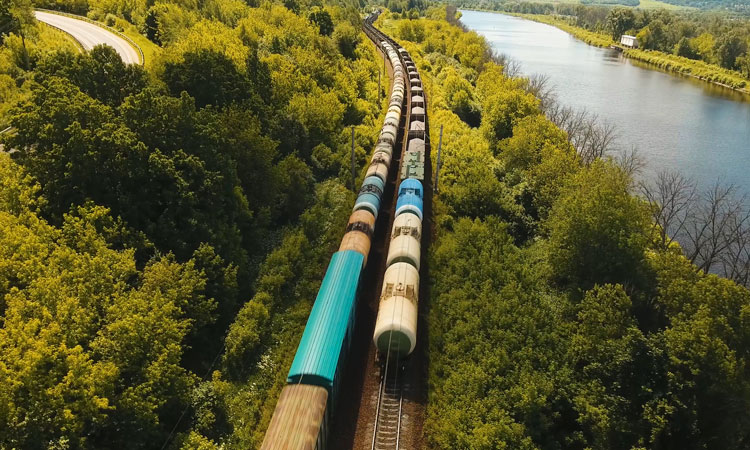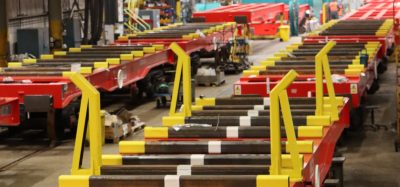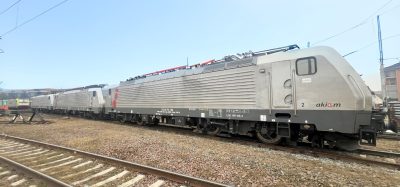How rail freight can play a vital role in transporting hazardous COVID-19 waste
Posted: 21 April 2021 | Božica Radoš | No comments yet
Božica Radoš, CEO of Venit ExAnte Ltd, explores the vital role rail freight continues to play in transporting hazardous waste seen as a result of the coronavirus pandemic.


The definition of ‘waste’ is any substance which is discarded after primary use, or is worthless, defective and of no use. But why is it important to classify types of waste? For the purpose of this article, let us focus on hazardous waste. Simply because, among other things, the shipment of this type of waste is a big logistical issue, not least for rail.
The advantages of using rail to transport freight are widely known throughout the sector. It’s efficiency, reliability and, particularly, its green credentials – each freight train removes approximately 60 HGVs from the road – make it the preferred choice. Rail’s ace to play, particularly when it comes to hazardous waste, is safety – with rail argued to be as much as five times safer as a means of transporting hazardous waste than road. Additionally, with the inevitable increase in hazardous waste seen as a result of the coronavirus pandemic, this issue becomes all the more pertinent.
Hazardous wastes can take the form of solids, liquids, sludges or contained gases, and they are generated primarily by chemical production, manufacturing and other industrial activities. They may cause damage during inadequate storage, transportation, treatment or disposal operations.
For a material to be classified as a hazardous waste, it must first be a solid waste. Therefore, the first step in the hazardous waste identification process is determining if a material is a solid waste.
The second step in this process examines whether the waste is specifically excluded from regulation as a solid or hazardous waste. Importantly, if the waste is classified as hazardous waste, then it needs to be treated under the ADR/ RID dangerous goods transport regulations.
COVID-19 waste
New questions are emerging around the hazardous waste produced as a result of the coronavirus pandemic. Across the globe, COVID-19 has seen the issue of hygiene rapidly take centre stage. What substances are sufficiently strong to disinfect? What can ‘kill’ a virus? Gallons and gallons of chemicals (which are dangerous goods) were, and still are, being used to disinfect all sort of surfaces. Not so long ago, even public roads were being sprayed with chemicals in order to disinfect public spaces.
Rail’s ace to play, particularly when it comes to hazardous waste, is safety – with rail argued to be as much as five times safer as a means of transporting hazardous waste than road.
The world has taken a variety of measures to help to prevent the spread of COVID-19, which have negatively affected international trade in specific goods, with a few noteworthy exceptions. Among these are goods used in direct response to the COVID-19 pandemic such as: sterilisation products (including disinfectants); medical vehicles and furniture; protective garments; diagnostic testing equipment; medical devices; oxygen therapy equipment; and medical consumables, or so called ‘COVID-19-related products’.
Here, we have seen the rail industry truly coming to the fore. While passenger services have been reduced, freight operations have not only continued, but increased, transporting vital supplies to where they are needed. In 2020, China to Europe freight trains transported 9.39 million items of medical equipment; Maersk arranged block trains transporting personal protective equipment (PPE) from China to Poland; and Network Rail supported DB Cargo UK and Transfesa Logistics to launch a 72 hour rail service transporting hygiene, medical and food products from Valencia and Murcia into London.
In March 2020, InterCity RailFreight and CrossCountry teamed up to transport medical supplies across Great Britain, supporting the express roll-out of the UK’s COVID-19 vaccination programme.
The rail sector is full of such examples, rail operators and networks working seamlessly to carry COVID-19-related products, and many other essential supplies, since the outbreak began.
Safe disposal of COVID-19 waste
These products are being transported across the globe for our use, but what happens after they are used? After COVID-19-related products are used in hospitals, they become a medical waste and are disposed of accordingly. But what about those tossed in the street’s regular garbage bins? Or at home into regular household waste bins?
This waste is becoming a new type of waste; a COVID-19 waste. Infective, dangerous waste that is widely spread and can be found in parks, in public areas and in open street garbage bins.
Waste management and transport branches are recording an increase of COVID-19 waste, which, by itself, does not exist as a category, but which forms part of what is categorised as medical waste. The problem arises, however, when COVID-19 waste gets mixed up with regular waste.
Challenges of transporting dangerous goods
Today, certainly the main challenge is in terms of safety and security; globalisation requires fast, high quality, just-in-time transportation.
While passenger services have been reduced, freight operations have not only continued, but increased, transporting vital supplies to where they are needed.
Interoperability is the key to successful transport. Using digital intelligence as a key factor in determining the prevalence of accidents in transporting such waste will change perspectives.
Undeniably, the problem of the transport of dangerous goods is under greater inspection, directly and indirectly, due to the COVID-19 crisis. It is important to raise awareness and facilitate the understanding of provisions of Directive 2008/68/EC on the inland transport of dangerous goods and regulation concerning the International Carriage of Dangerous Goods by Rail (RID).
Transportation of any goods by rail, especially hazardous COVID-19 waste, is related to risks. The influence of random factors and events can lead to an accident resulting in leakage of hazardous substances. Incidents of this kind not only threaten the safety of rail transport, but also life, and health, and are particularly damaging to the environment. Since risk management is not strictly tied to a specific system or activity, it can be combined with other necessary and appropriate methods and used also for rail transport. In accordance with the risk management the Commission of Experts OTIF (Working Group on Standardization of Risk Analysis) developed Generic Guideline for the Calculation of Risk due to Railway Transport of Dangerous Goods. Guideline uses widely known and tested procedures for analysis and risk evaluation according to RID procedures. Reliable transportation of goods is the primary and determining precondition for transport quality. When comparing rail traffic with other traffic modes, we find out that rail traffic is undoubtedly the most reliable mode. This reliability does not result from a lower number of traffic accidents, but also lesser losses incurred from these accidents.
All participants in the logistics chain must be aware of the need for experts in charge of transport of dangerous goods management, occurrence reporting, transport statistics, risk estimation models, decision-making processes including risk decision-making principle and so on.
Today, a new digital solution can help to easily resolve the problem of transporting that type of waste. Venit ExAnte’s software solution, Dangerous Goods Optimisation – an outstanding example of how technology can improve the control and management of business processes.
But, still, we have a paradox. What about household waste? Is it a dangerous waste or…?









